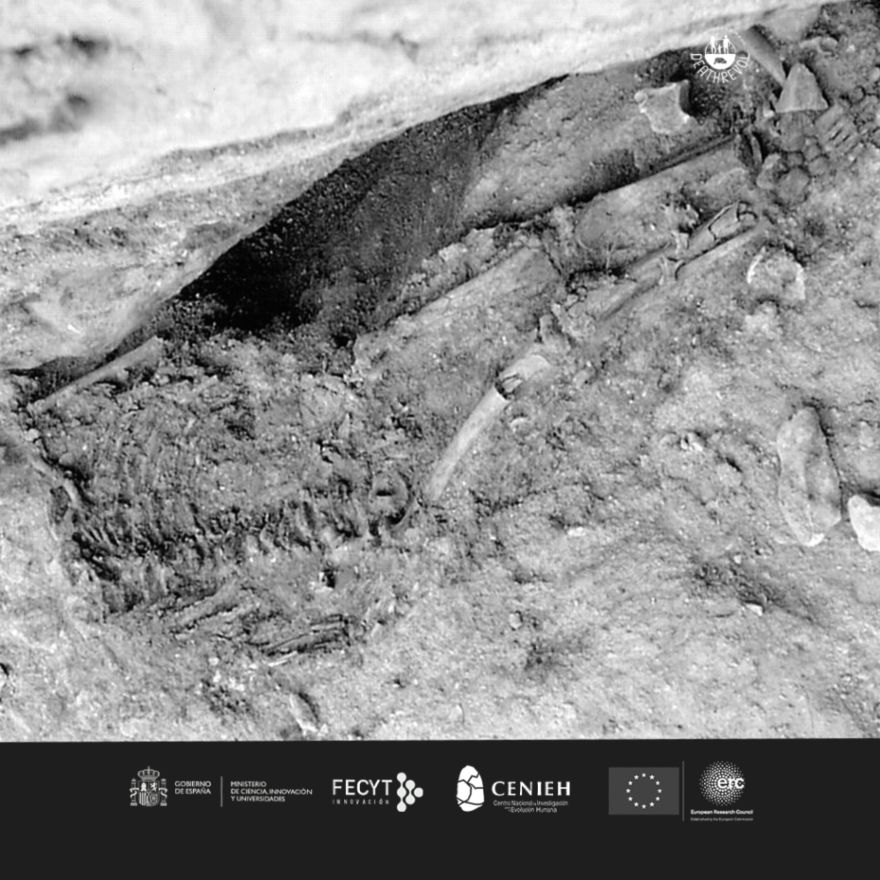
@erc.europea.eu @cenieh.bsky.social @FECYT
Read the full story in the new chapter of the 𝘈𝘤𝘤𝘰𝘮𝘱𝘢𝘯𝘪𝘦𝘥 series in our latest blog post:
https://deathrevol.com/en/accompanied_qafzeh-9-and-10/ #burials
@erc.europa.eu @cenieh.bsky.social #FECYT

Read the full story in the new chapter of the 𝘈𝘤𝘤𝘰𝘮𝘱𝘢𝘯𝘪𝘦𝘥 series in our latest blog post:
https://deathrevol.com/en/accompanied_qafzeh-9-and-10/ #burials
@erc.europa.eu @cenieh.bsky.social #FECYT
Excited to share our work and learn from top experts!
🔗 More info: https://coloquiojuancomas.iia.unam.mx/inicio
@erc.europa.eu @cenieh.bsky.social



Excited to share our work and learn from top experts!
🔗 More info: https://coloquiojuancomas.iia.unam.mx/inicio
@erc.europa.eu @cenieh.bsky.social
Coutesy Musée d’Art et Archéologie du Périgord (Périgueux, France)
@erc.europa.eu @cenieh.bsky.social #FECYT
Coutesy Musée d’Art et Archéologie du Périgord (Périgueux, France)
@erc.europa.eu @cenieh.bsky.social #FECYT
https://muysciencefest.com/2025/salamanca
@erc.europa.eu @cenieh.bsky.social

https://muysciencefest.com/2025/salamanca
@erc.europa.eu @cenieh.bsky.social
@erc.europa.eu @cenieh.bsky.social #FECYT

@erc.europa.eu @cenieh.bsky.social #FECYT
Courtesy of Center for Human Evolution and Biohistory Research, Faculty of Medicine, Tel Aviv University
@erc.europa.eu @cenieh.bsky.social #FECYT

Courtesy of Center for Human Evolution and Biohistory Research, Faculty of Medicine, Tel Aviv University
@erc.europa.eu @cenieh.bsky.social #FECYT
We are off to Dolní Věstonice, where three young people were buried side by side over 31,000 years ago.
Learn more on our site: https://deathrevol.com/en/accompanied_dolni-vestonice/
@erc.europa.eu @cenieh.bsky.social #FECYT

We are off to Dolní Věstonice, where three young people were buried side by side over 31,000 years ago.
Learn more on our site: https://deathrevol.com/en/accompanied_dolni-vestonice/
@erc.europa.eu @cenieh.bsky.social #FECYT
¿Podrás ayudarle a reconstruir su historia con ayuda de los fósiles y los laboratorios del @cenieh.bsky.social ? 🧠
¡Escapa antes de que sea tarde!

¿Podrás ayudarle a reconstruir su historia con ayuda de los fósiles y los laboratorios del @cenieh.bsky.social ? 🧠
¡Escapa antes de que sea tarde!
Courtesy of Gray Faculty of Medical and Health Sciences. Tel-Aviv Universit
@erc.europa.eu @cenieh.bsky.social #FECYT
Courtesy of Gray Faculty of Medical and Health Sciences. Tel-Aviv Universit
@erc.europa.eu @cenieh.bsky.social #FECYT
@erc.europa.eu #FECYT

@erc.europa.eu #FECYT
👥 Accompanied
💫 Healed
⚔️ Struck
🩸 Reddened
🪓 Beheaded
@erc.europa.eu @cenieh.bsky.social #FECYT


👥 Accompanied
💫 Healed
⚔️ Struck
🩸 Reddened
🪓 Beheaded
@erc.europa.eu @cenieh.bsky.social #FECYT
@erc.europa.eu @cenieh.bsky.social #FECYT

@erc.europa.eu @cenieh.bsky.social #FECYT
Courtesy of the Institut de Paléontologie Humaine (IPH), Paris.
@erc.europa.eu @cenieh.bsky.social #FECYT
Courtesy of the Institut de Paléontologie Humaine (IPH), Paris.
@erc.europa.eu @cenieh.bsky.social #FECYT
14,000 years ago, a woman, a man… and a dog were buried together. A gesture that speaks of care, affection and a bond as old as time.
Photo: J. VogelLVR – LandesMuseum Bonn
@erc.europa.eu @cenieh.bsky.social #FECYT

14,000 years ago, a woman, a man… and a dog were buried together. A gesture that speaks of care, affection and a bond as old as time.
Photo: J. VogelLVR – LandesMuseum Bonn
@erc.europa.eu @cenieh.bsky.social #FECYT
Coutesy Musée d’Art et Archéologie du Périgord (Périgueux, France)
@erc.europa.eu @cenieh.bsky.social #FECYT
Coutesy Musée d’Art et Archéologie du Périgord (Périgueux, France)
@erc.europa.eu @cenieh.bsky.social #FECYT
A través del juego aprendieron sobre anatomía, taxonomía, geocronología y tafonomía.
¡Gracias por vuestra curiosidad y entusiasmo!
@erc.europa.eu @cenieh.bsky.social #FECYT


A través del juego aprendieron sobre anatomía, taxonomía, geocronología y tafonomía.
¡Gracias por vuestra curiosidad y entusiasmo!
@erc.europa.eu @cenieh.bsky.social #FECYT
A great opportunity to discuss science and research. 🔬🧠
More info: https://www.aeaof.com/jornadas.html
@ERC_Research @FECYT_Ciencia @CENIEH

A great opportunity to discuss science and research. 🔬🧠
More info: https://www.aeaof.com/jornadas.html
@ERC_Research @FECYT_Ciencia @CENIEH
Coincidence? Ritual?
Photo: João Zilhão and Cidália Duarte. www.science.org/doi/10.1126/sciadv.adp5769
@erc.europa.eu @cenieh.bsky.social #FECYT

Coincidence? Ritual?
Photo: João Zilhão and Cidália Duarte. www.science.org/doi/10.1126/sciadv.adp5769
@erc.europa.eu @cenieh.bsky.social #FECYT
Courtesy of Muséum National d’Histoire Naturelle (Paris)
@erc.europa.eu @cenieh.bsky.social #FECYT
Courtesy of Muséum National d’Histoire Naturelle (Paris)
@erc.europa.eu @cenieh.bsky.social #FECYT
This adolescent, around 12 or 13 years old, was buried about 90,000 years ago in Qafzeh Cave (Galilee, Israel)
Image: https://doi.org/10.4000/paleo.4848
@erc.europa.eu @cenieh.bsky.social #FECYT

This adolescent, around 12 or 13 years old, was buried about 90,000 years ago in Qafzeh Cave (Galilee, Israel)
Image: https://doi.org/10.4000/paleo.4848
@erc.europa.eu @cenieh.bsky.social #FECYT
Courtesy of Landesamt für Denkmalpflege und Archäologie. Weimar
@erc.europa.eu @cenieh.bsky.social #FECYT
Courtesy of Landesamt für Denkmalpflege und Archäologie. Weimar
@erc.europa.eu @cenieh.bsky.social #FECYT
This Neanderthal infant, buried around 60,000 years ago in Amud Cave (Israel), was found in anatomical connection.
#Burials
Photo: doi:10.1017/9781316106754.029
@erc.europa.eu @cenieh.bsky.social #FECYT

This Neanderthal infant, buried around 60,000 years ago in Amud Cave (Israel), was found in anatomical connection.
#Burials
Photo: doi:10.1017/9781316106754.029
@erc.europa.eu @cenieh.bsky.social #FECYT
Drawing: https://doi.org/10.4000/paleo.4848
@erc.europa.eu @cenieh.bsky.social #FECYT

Drawing: https://doi.org/10.4000/paleo.4848
@erc.europa.eu @cenieh.bsky.social #FECYT
Courtesy of Institut de Paléontologie Humaine (IPH), Paris.
@erc.europa.eu @cenieh.bsky.social #FECYT
Courtesy of Institut de Paléontologie Humaine (IPH), Paris.
@erc.europa.eu @cenieh.bsky.social #FECYT
We will be waiting for you this evening!
https://www.cenieh.es/actualidad/eventos/xvi-noche-europea-de-los-investigadores-26-y-27-de-septiembre-2025
@erc.europa.eu

We will be waiting for you this evening!
https://www.cenieh.es/actualidad/eventos/xvi-noche-europea-de-los-investigadores-26-y-27-de-septiembre-2025
@erc.europa.eu

